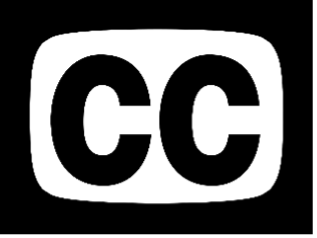Caption Us! A Message to Hearing care Professionals
The Way I Hear It
Gael Hannan (The Way I Hear It) is a hard of hearing advocate that understands both sides of the fence between the consumer and the hearing health care professional. Gael’s columns are humorous, sometimes cutting, but always constructive and to the point.

My hearing advocacy colleague Shari Eberts and I were excited, as always, to attend a conference of hearing care professionals (HCPs), where we were scheduled to present the patient’s perspective.
We were dismayed, at the first presentation of the conference, to find that the captioning access we depend on for speech comprehension was not available. While we had not expected that the room would be hearing-looped, which is the standard in consumer hearing loss meetings and conferences, captioning access is integral to the communication success of people with hearing loss.
To us, this was a shocking oversight. Without the speakers’ words streaming into our devices and without larger screen text interpretation on stage near the speaker, we were at a clear disadvantage to other audience members.
A speech-to-text app on our smartphones helped to bridge some of the gap. But in a large room where the phone was at a distance from the speaker, the captioning was far from perfect. We had to toggle our necks and focus between the speaker and our phones. On a couple of occasions, the speaker’s words were mis-captioned as sexual comments, which made us laugh and set us further adrift from the speaker’s message.
Lisa Anne Seerup, an audiologist and president of Hearing New Zealand, recently posted on LinkedIn: I have never been to an audiology event that was accessible to people with hearing impairment. Non-existent captioning, no assistive devices, poor acoustics, and events that exceed safe noise levels that create neurological damage.
I have attended just one professional conference offering inclusive communication access, but most events do not. Why not?
Do organizers assume captions aren’t necessary because:
- All the attendees will all be ‘hearing’?
- The speakers will be using microphones, providing sufficient amplification?
- Any attendees with hearing loss will be using hearing aids?
Or is it that captioning access is not yet the norm and therefore off the radar?
It’s a fact of the hearing loss life that visual information supports audible information. As the pandemic waned, my cochlear implant audiologist used a captioning tablet during the appointment. At my hearing aid clinic, there was a similar tablet on the check in counter to help us understand the staff. But when the mask-wearing stopped, so did the tablets.
Hearing care conferences provide professional development to its members including new standards in patient care. So, it stuns me that a crucial piece of communication access used and needed by most of their patients, is not yet customary – even though a growing number of HCPs themselves also have hearing loss!
Many years ago, I was amazed to meet, for the first time, an audiologist who had hearing loss. How could that be? How could she do her job? But she did it well and today I meet many HCPs with hearing loss. When I present to university audiology programs, there are students with hearing loss choosing a career in the hearing health profession. This is thrilling.
This reason alone should be sufficiently compelling to offer communication access in all professional hearing-related events. It’s easy to do and compared to the other forms of convention production razzmatazz, it’s cheap.
Captioning is on the rise everywhere – in restaurants, cinema, public spaces, and of course on television, computers, our smartphones. Please, if you haven’t already done so, introduce captioning access into all areas of your profession. We, the people with hearing loss who are both your clients and colleagues, need it and would appreciate it.

